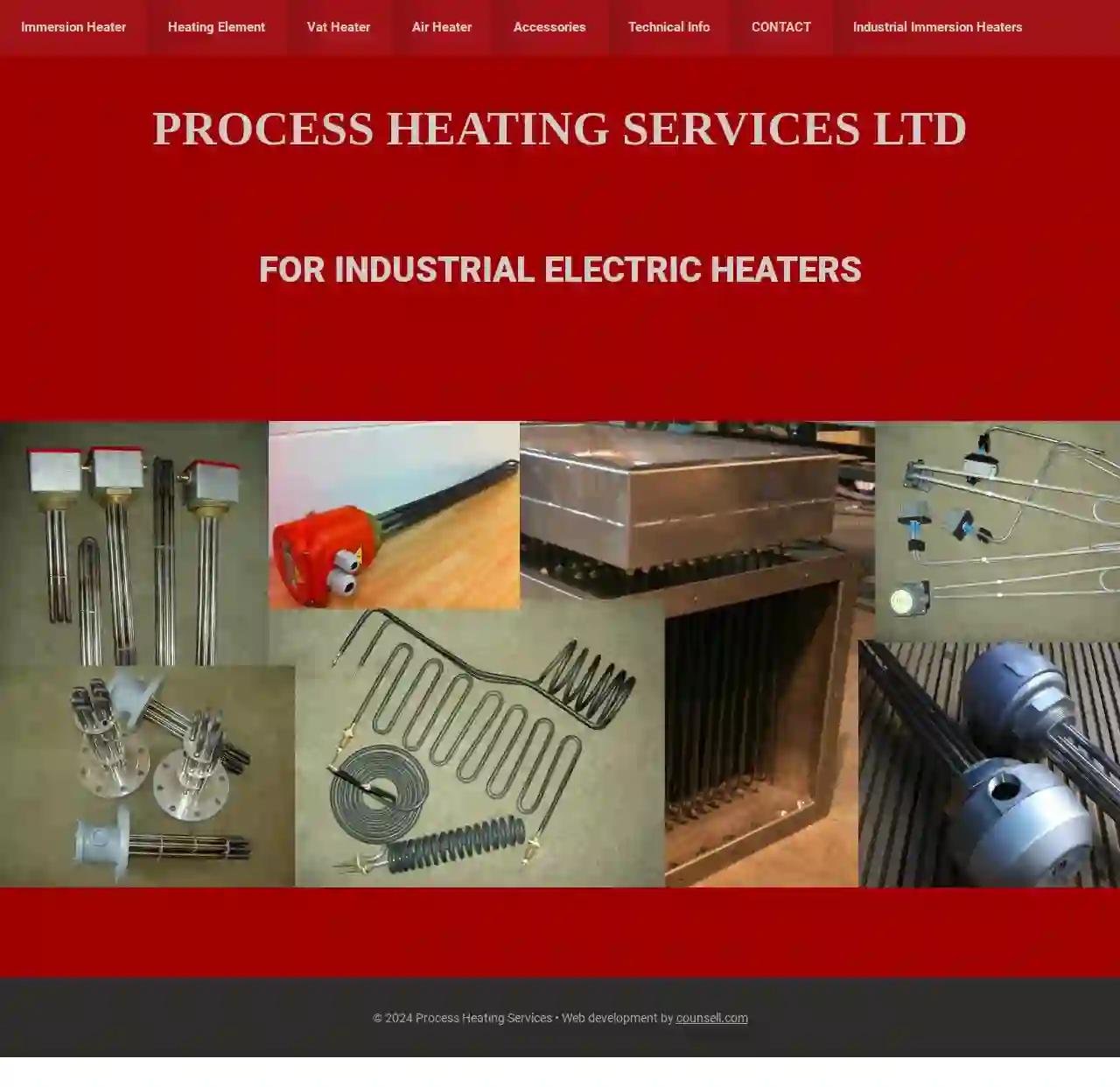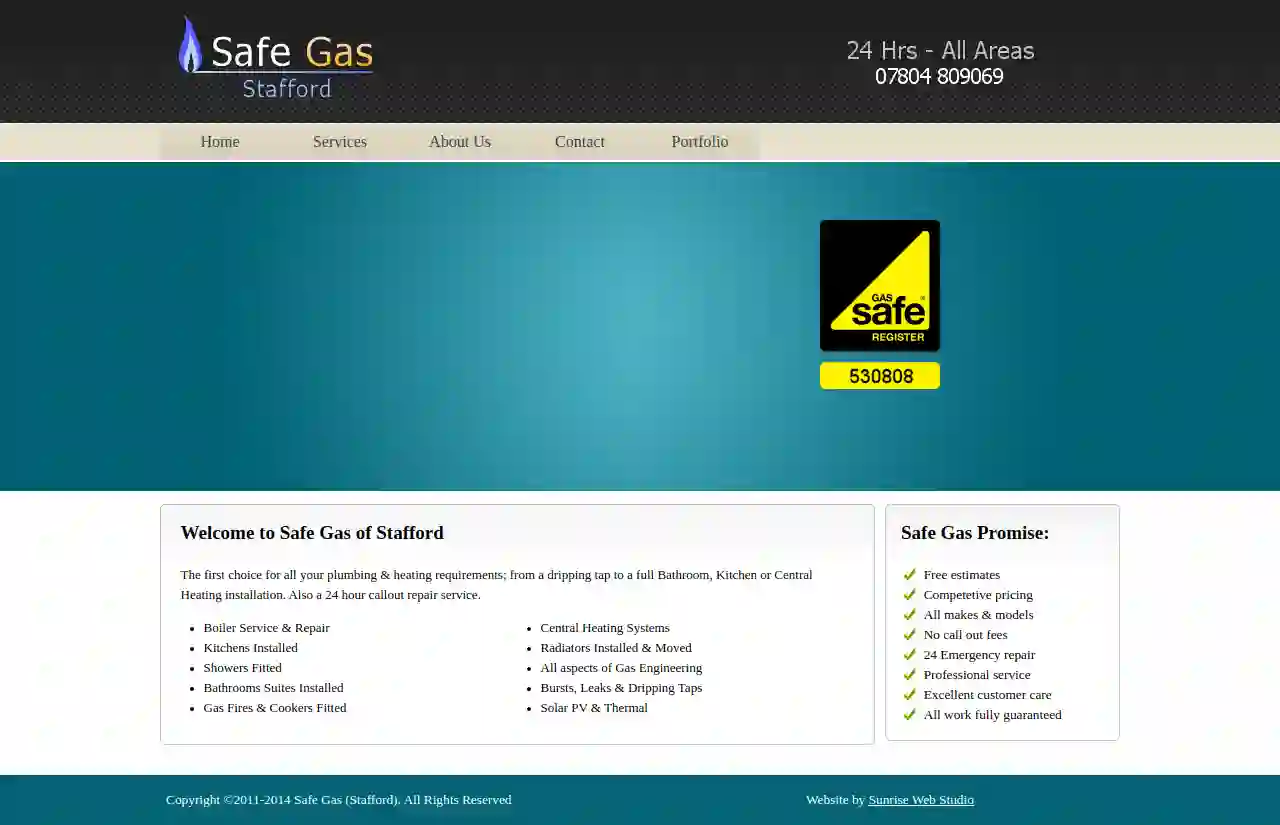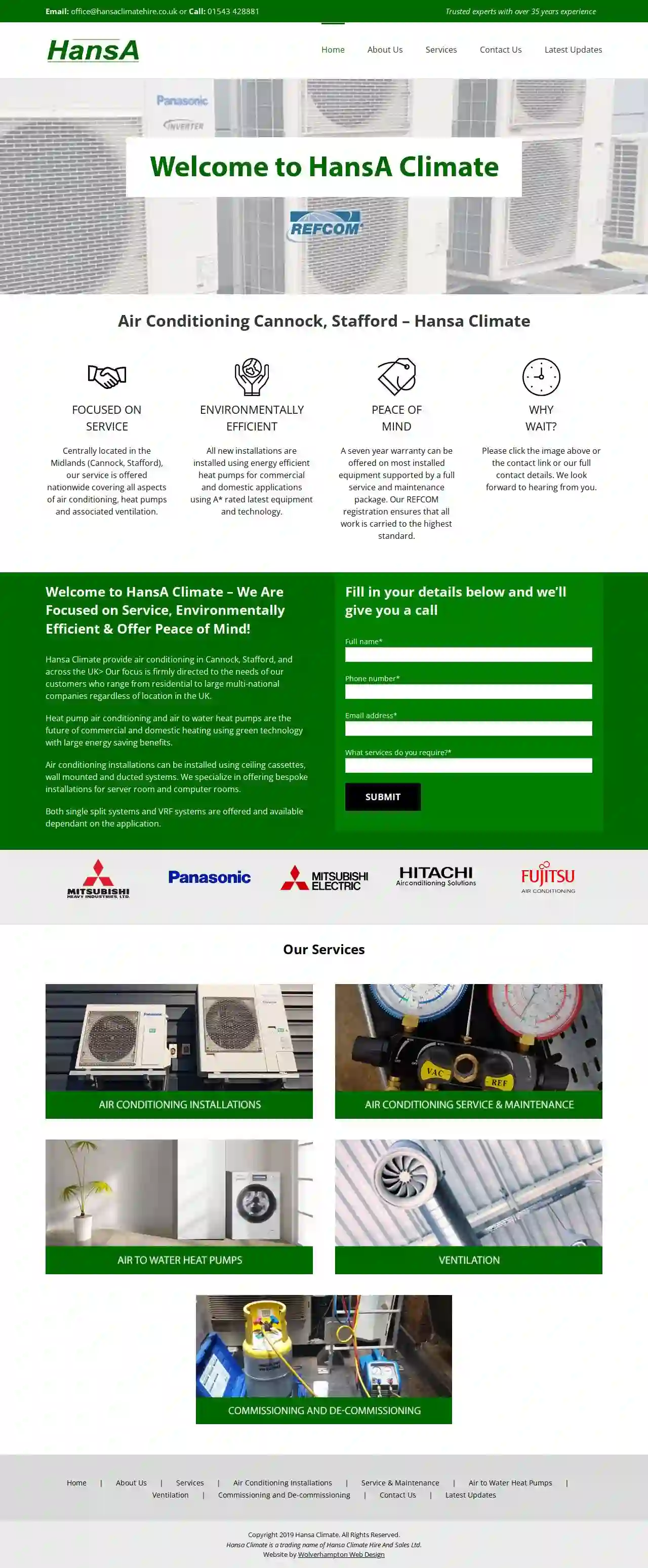Boiler Installation Endon
Find the best Boiler Replacement in Endon
Get 3 FREE Boiler Installation quotes for your project today! Compare profiles, reviews, accreditations, portfolio, etc... and choose the best offer.

Process Heating Services Ltd
543 reviewsLichfield, GBProcess Heating Services Ltd. is a leading provider of industrial electric heaters. With a wide range of products, including acid immersion heaters, alkali immersion heaters, air heaters, and more, we cater to diverse industrial heating needs. Our commitment to quality, reliability, and customer satisfaction has made us a trusted name in the industry. We offer expert design consultations, technical support, and next-day delivery on stock items. Contact us today to discuss your heating requirements and experience the Process Heating Services difference.
- Services
- Why Us?
- Our Team
Get Quote
Safe Gas ( Stafford )
10, Copper Glade, Stafford, ST16 3RJ, GBSafe Gas of Stafford is a Gas Safe registered business with experience in all aspects of gas, domestic central heating, and plumbing. In addition to plumbing services, they also offer building services such as extensions, new builds, alterations, renovations, and plastering. Safe Gas serves Stafford, Cannock, Penkridge, Stoke, Telford, Wolverhampton, Birmingham, and the wider Midlands. They pride themselves on providing high-quality work, from simple repairs to full installations, and offer a 24-hour callout repair service.
- Services
- Why Us?
- Accreditations
- Testimonials
- Gallery
Get Quote
Moorcroft Electrical and Switchgear
4.73 reviewsUnit 2 The Green, Cannock, WS11 7LG, GBAt Moorcroft, we pride ourselves on collaborating with our clients to find solutions to their electrotechnical challenges. We believe in building strong, face-to-face relationships with our customers. We offer support and solutions across a wide range of areas, including electrical, energy management, control systems, instrumentation, and process calibration. Our clients choose us because of our honest approach and our dedication to understanding their systems and the impact they have on their business. Our engineering team is highly experienced, well-trained, and passionate about tackling complex controls and process automation tasks.
- Services
- Why Us?
- Accreditations
- Gallery
Get Quote
Sovereign Refrigeration LTD
44 reviewsUnits 4/5/12, Birchbrook Ind Park, Lynn Lane, Shenstone, WS14 0DJ, GBSovereign Refrigeration Ltd was founded in 1983 and is leading the way in the commercial refrigeration and air conditioning industry. We specialise in the service, maintenance, installation and supply of all types of refrigeration equipment. With our continued growth over the last 37 years due to our outstanding service and customer satisfaction we have become one of the United Kingdom’s leading refrigeration specialists. From our Head Office based in the heart of England, we provide a specialist, 24/7 365 day service throughout most of the UK with our highly trained and dedicated team of engineers that take great pride in the quality and standard of their work. Our fleet of directly employed service engineers carry a comprehensive service van stock and the latest diagnostic technology so are normally able to affect a repair on the initial visit, minimising the stress of downtime we know a breakdown can cause. Added to this is a dedicated parts warehouse and in-house parts team so any required parts are quickly sourced allowing us to provide a rapid response in affecting repairs. With a reputation in the industry for great customer care and a high first time fix rate we are proud to be respected and trusted by some of the UK’s leading companies in the leisure/retail/commercial and public sectors. We aim to provide a first class custom built service to your refrigeration requirements and work closely with the world’s leading manufactures so we can offer our client’s new innovative products and cost saving solutions. This is why we have quickly become the refrigeration company of choice. Why Choose Us? 24/7, 365 help desk A fleet of directly employed engineers Latest diagnostic technology Accredited service provider Fully inclusive contracts Rapid call out response High first time fix rate Highly trained and skilled engineers Dedicated stock warehouse and parts team Outstanding customer service WE SPECIALISE IN ALL ASPECTS OF REFRIGERATION & AIR CONDITIONING 24/7, 365 Help Desk Accredited Service Provider Outstanding customer service HIGH FIRST TIME FIX RATE Highly Trained & Skilled Engineers Latest Diagnostic Technology Rapid Call Out Response UNPARALLELED DESIGN & INSTALLATION SERVICE In House Design Team First Class Tailored Service Innovative Products & Cost Saving Solutions
- Services
- Why Us?
- Accreditations
- Gallery
Get Quote
Parsons Plumbing & Heating Ltd
4.469 reviewsUnit 3, Baswich Business Park, Tilcon Avenue, Stafford, ST18 0YL, GBParsons Plumbing & Heating are Gas Safe Registered & offer professional, high standard service. We are a well-established and experienced family run business. We are recommended by many happy customers because we treat every job the same. Putting in every effort to each, and tailoring them to suit the client's needs and wants.
- Services
- Why Us?
- Accreditations
- Testimonials
- Gallery
Get Quote
AltraGas
511 reviewsTamworth, Staffordshire, B77 3LN, GBAltraGas are reliable professionals offering a wide range of residential and commercial plumbing services. Whether you need a simple toilet installation or a complete gas boiler replacement, we strive to exceed your expectations by providing the very best service. Our services include boiler servicing, repair, full bathroom renovations, new boiler installations, gas safety checks for landlords, pipework alterations, and central heating system checks. With 23 years of experience, we can guide you through every step of the process, ensuring your complete satisfaction. We are committed to providing unparalleled service and offer free quotes. Contact us today to discuss your needs.
- Services
- Why Us?
- Gallery
Get Quote
Thermal Clad Ltd
51 reviewsTamworth, GBThe UK's Premier Commercial & Industrial Insulation Contractors. At Thermal Clad, we specialise in mechanical insulation of piping, ductwork, and plant items such as vessels and tanks. We serve commercial and industrial businesses in both the private and public sectors throughout the UK.
- Services
- Why Us?
- Gallery
Get Quote
HARNCE Heating & Plumbing
576 reviews14 Collins Hill, Lichfield, WS13, GBOur family has over 20 years of experience in the heating and plumbing industry. We wanted to bring our expertise to families and businesses in our local area. Based in Lichfield, Staffordshire, we service a wide range of towns including Burntwood, Cannock, Lichfield, Tamworth, Sutton Coldfield, Burton and surrounding villages. We offer a comprehensive range of services, from new boiler installations and annual servicing of gas, oil and LPG appliances to breakdowns, leaks, Landlord Gas Safety checks and all types of plumbing work. We pride ourselves on providing easy financing options for new boiler installations, allowing you to spread the cost over several months. We also offer free, at-home consultations with no charge for assessments. We believe in delivering exceptional customer service, which we've been doing for over 25 years in various customer-facing roles. You can trust HARNCE for all your heating and plumbing needs. Our team is fully qualified, licensed, and insured, with years of experience in both commercial and domestic environments. We hold full public liability insurance, Gas Safe qualifications, and are committed to providing a high standard of workmanship.
- Services
- Why Us?
- Accreditations
- Gallery
Get Quote
Hansa Climate
514 reviewsHednesford, Cannock, Unit 1, The Business Centre, WS11, GBHansa Climate is a trusted expert in air conditioning, heat pumps, and ventilation with over 35 years of experience. Centrally located in the Midlands (Cannock, Stafford), we offer our services nationwide, covering all aspects of air conditioning, heat pumps, and associated ventilation. We are dedicated to providing environmentally efficient solutions using A* rated, latest equipment and technology for both commercial and domestic applications. Our commitment to quality is reflected in our seven-year warranty on most installed equipment, supported by a comprehensive service and maintenance package. We are REFCOM registered, ensuring all work meets the highest standards. At Hansa Climate, our focus is on customer satisfaction, serving a diverse clientele ranging from residential homes to large multinational companies across the UK. We believe that heat pump air conditioning and air to water heat pumps are the future of heating, offering significant energy savings and environmental benefits. We specialize in bespoke installations for server rooms and computer rooms, utilizing ceiling cassettes, wall-mounted, and ducted systems. We offer both single split systems and VRF systems, tailored to meet the specific needs of each application.
- Services
- Why Us?
- Gallery
Get Quote
Thermaright Hire Solutions
Unit 2, Modular Court, Enterprise Drive, Wolverhampton, WV 10 7DF, GBThermaright Hire Solutions is a company that provides portable, flexible solutions for temperature control hire. For over 30 years, our directors have worked across Mechanical and Electrical installations, exceeding the demands of our customers in the most challenging of circumstances. We give people full solutions from the ground up. Our team developed a fresh approach to temperature control hire to demystify HVAC for the average man on the street and support even the most knowledgeable of clients in the most challenging of problems. We want to make things right... Thermaright is a company that innovates and provides bespoke software, products, and solutions developed in-house to provide succinct solutions at the touch of a button. We have a team of experts who can deliver a bespoke temporary package and connect it quickly to keep your business operating, whilst your existing kit is being repaired and fully tested.
- Services
- Why Us?
- Accreditations
- Our Team
- Gallery
Get Quote
Over 12,692+ HVAC Contractors on our platform
Our HVAC companies operate in Endon & surrounding areas!
HVACCompaniesHub has curated and vetted the Best HVAC Companies in Endon. Find the most reliable business today.
Frequently Asked Questions About Boiler Installation
- Your boiler is more than 15 years old: Older boilers are much less efficient than modern condensing boilers and are more likely to break down, so upgrading to a new, energy-efficient boiler could save you significant amounts on your energy bills over time.
- Your boiler keeps breaking down: If your boiler requires frequent repairs, it might be more cost-effective to replace it in the long run.
- Your energy bills are increasing: An inefficient boiler uses more energy resulting in costly increases to your heating bills. Consider replacing it with an energy-efficient model.
- Your boiler is making strange noises: Unusual banging, whistling, or gurgling sounds could indicate a problem with your boiler and should be investigated by a qualified heating engineer.
- Your radiators are not heating up properly: Radiators taking a long time to warm up, or some radiators not heating at all could indicate a boiler malfunction, air in the system, or circulation problems.
- Low water pressure: Low water pressure can be a symptom of issues with the boiler. A qualified technician should investigate the problem. .
- Leaks or drips near your boiler: If you notice water pooling around your boiler, it's important to get it checked by a professional immediately.
- Pilot light goes out frequently: If you have an older boiler and the pilot light goes out frequently, it may need to be repaired or replaced. .
- Yellow flame instead of blue: A yellow flame could indicate the presence of carbon monoxide, which is a dangerous gas. . Seek immediate assistance from a qualified professional.
What is a boiler's BTU rating?
What are the signs that I need a new boiler?
How long does it take to install a boiler?
Can I install a boiler myself?
What is a boiler's BTU rating?
What are the signs that I need a new boiler?
- Your boiler is more than 15 years old: Consider replacing an older unit with a new, high-efficiency boiler.
- Your boiler keeps breaking down: If your boiler requires frequent repairs, it might be more cost-effective to replace it in the long run.
- Your energy bills are increasing: An inefficient boiler uses more energy resulting in costly increases to your heating bills. Consider replacing it with an energy-efficient model.
- Your boiler is making strange noises: Unusual banging, whistling, or gurgling sounds might mean there is a serious issue with your boiler and require professional service.
- Your radiators are not heating up properly: Radiators taking a long time to warm up, or some radiators not heating at all could indicate a boiler malfunction, air in the system, or circulation problems.
- Low water pressure: Low water pressure can be a symptom of issues with the boiler. Have a heating engineer inspect the system.
- Leaks or drips near your boiler: If you notice leaks or drips around your boiler, turn off your boiler and immediately contact a qualified heating engineer to assess and fix the issue.
- Pilot light goes out frequently: A faulty pilot light is often a sign of bigger issues to come.
- Yellow flame instead of blue: A yellow flame could indicate the presence of carbon monoxide, which is a dangerous gas. . Seek immediate assistance from a qualified professional.